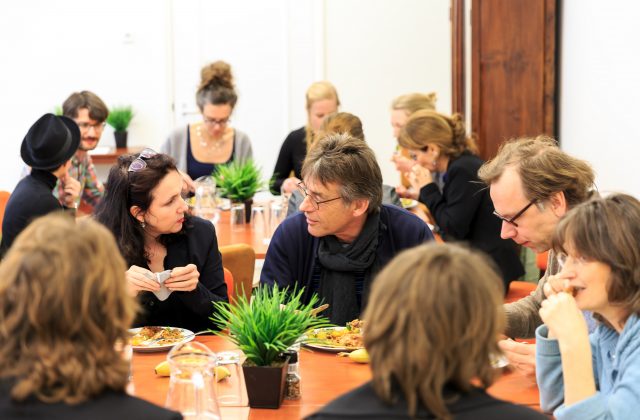
Lunch at NIAS
Sharing a table with strangers
Lunch at NIAS
I cherish dear memories, though few, of NIAS. I was never a fellow there, but frequented the institute regularly for Board meetings. In that capacity I was offered lunch sometimes. These lunches are part of a game: one shares a table with complete strangers and one is expected to hold a conversation that exceeds such generalities as the quality of the food or the atmosphere of the place. It is important on these occasions to have a fair understanding of the cultural background of your companions, a vital requirement indeed, as I will demonstrate with the following incident exemplifying a binary prejudgment.
The Americans, as you know, appreciate directness and they are not offended by more personal questions such as ‘where are you from’ or ‘what is your field’; the British, on the other hand, are used to taking the more indirect route including the ongoing joke. Americans are usually confused by this attitude. They quickly conceive joking as strange and fear being made to look foolish. I have alienated more than one American through teasing him with nonsense and especially through statements of a kind which received some support, or ripostes in a similar nonsensical vein, from inhabitants of Oxbridge.
At one of the lunches things got completely out of hand. The only excuse I have is that we had just endured a long meeting under Uhlenbeck’s very able chairmanship. However, it was not very sensible of me to explain to one of my American friends in jest that we in the Netherlands have abolished all taboo subjects, with one exception. We may freely offend our Queen or all deities of the various religions (the Catholic church in preference), but one thing should never be disputed publicly, not even as a theoretical option: the possibility that social security payments could negatively influence the labour market.
Others – British? – entered eagerly into this conversation, adding fuel to the fire by voicing the proposition that anyone who stated, even in his favourite pub, that the receivers ofthese benefits prefered to stay at home rather than to work at a chicken slaughter house, would suffer social ostracism and would definitely be forced to change pubs.
Imagine my amazement when, after some time, I came across a scientific publication by my former lunch companion to the effect that in the Netherlands it was not recognized that the supply of labour was subject to the level of social security benefits, since it was taboo to presume any relation between the two. This, the article went on, was why the welfare state was now facing such difficulties.
I felt guilty on reading this piece which obviously arose from my misplaced joke. Not too guilty of course, as everybody could have known that since the fifties stories have gone around about labourers who prefer to stay at home (allowing themselves to be declared unfit for work, then receiving unemployment compensation, and immediately afterwards starting a sideline). And such stories have run further than the local pub or the well-known newspaper De Telegraaf.
What I actually want to say is that intercultural exchange as practised in NIAS is a good thing indeed, but may sometimes lead to misunderstandings. The only solution for overcoming these, I think, is to intensify these intercultural contacts by having more NIAS lunches.
About
Jan Pen (1921 – 2010) was a Dutch economist and a member of the NIAS Board. Pen was appointed professor of political economy and the theory of public finance at the University of Groningen in 1956. In 1959 he published Moderne Economie (Modern economy), for years the general introduction to macroeconomics in the Netherlands. Pen is also the creator of the so-called “Pen’s parade“, a graphical representation of income distribution. In this graph families or individuals are added along on the x-axis ranked from poor to rich, while the level of income is indicated on the y-axis.
This text was first published in the commemorative publication “22,5 years of NIAS” (1993).
-

-

-
 Insights
InsightsWhat is recognition?
-
 Insights
InsightsBullsh*t Security?